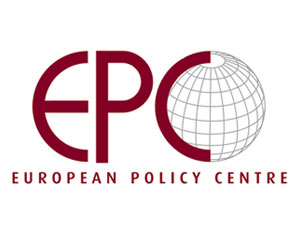EPC: A New Deal for Growth and Jobs in the Eurozone Revisited
By Fabian Zuleeg
At the EPC breakfast on 28 January, IMF Managing Director Christine Lagarde will launch a book on Jobs and Growth: Supporting the European Recovery[1], containing detailed policy analysis and recommendations. The book is a further sign that there is now wide-spread recognition that it is high time for Europe to take more action to deliver jobs and growth.
The Need to Focus on Growth and Jobs
 With the immediate ‘euro crisis’ subdued by the substantially reduced danger of a country exiting the euro area, the actions of the European Central Bank (ECB) and a range of policy actions, including progress on the Banking Union, the EU and its members need to think more about the real economy. While there are undoubtedly flaws in the European Monetary Union’s (EMU) new governance structure and further steps are still needed (with complacency a real danger), the risk/threat of immediate and catastrophic collapse is off the table. This creates the much needed space to deal with Europe’s dual growth crisis: low aggregate growth and a divergent economic performance of some countries, which are falling further and further behind.
With the immediate ‘euro crisis’ subdued by the substantially reduced danger of a country exiting the euro area, the actions of the European Central Bank (ECB) and a range of policy actions, including progress on the Banking Union, the EU and its members need to think more about the real economy. While there are undoubtedly flaws in the European Monetary Union’s (EMU) new governance structure and further steps are still needed (with complacency a real danger), the risk/threat of immediate and catastrophic collapse is off the table. This creates the much needed space to deal with Europe’s dual growth crisis: low aggregate growth and a divergent economic performance of some countries, which are falling further and further behind.
The need to focus on the real economy is a political and economic imperative if the EU wants to avoid getting trapped in a low growth/high debt scenario with deflationary tendencies, which would also imply, at best, a stagnating labour market. Not only would this be a loss of economic potential and a human tragedy for those trapped in unemployment but it would also favour political forces that will undermine European integration – as will be demonstrated by the populist anti-EU/euro vote for the European Parliament.
The Current Crisis Recipe
What can be done? So far, there has been a strong emphasis on fiscal consolidation and structural reform, with an asymmetric adjustment mostly carried out by the countries in crisis. This is not to say that there has been no support: the European Financial Stability Facility / European Stability Mechanism, the IMF and indirectly the ECB have provided plenty of support. However, the focus has been ensuring that countries can continue to meet their debt obligations and to ensure the stability of the financial system, rather than boosting economic growth. Of course, many have rightly argued that a stable macro-economic and fiscal environment with deficits under control creates conditions for growth and that reform of the financial sector is an essential step towards restoring bank lending which is crucial for investment. But while these actions are clearly necessary, they are not sufficient to restore growth.
“So far, there has been a strong emphasis on fiscal consolidation and structural reform, with an asymmetric adjustment mostly carried out by the countries in crisis.”
Ideally, structural reform should boost growth in the longer term. By removing product and labour market imperfections there will be a greater incentive to invest and employ. However, this does not necessarily happen: many structural reforms are, in reality, merely public spending cuts without a long term growth-enhancing effect. But even if these reforms are effective in raising the level of growth, they usually take a long time to work, especially with respect to employment. And if there is an absence of labour demand in the economy or a lack of available and affordable credit for private investment, even painful reforms might not bring the desired effect.
What remains? Monetary policy is another key factor, with the ECB continuing its low interest rates, as well as signalling that monetary policy will remain loose for some time to come. While the ECB is considering a more active stance, such as buying up packages of bank loans, it is difficult to imagine much more being done, given the institutional limitations of the ECB and the current political debate, especially in Germany. Tolerating higher inflation and European-style quantitative easing are likely to be a political step too far.
Improving export performance could help, and to some extent is already happening, with countries in crisis improving their external economic balance, albeit in some cases through import compression rather than better export performance. But becoming more balanced alone will not provide a positive growth impulse, especially if there is no adjustment towards a greater focus on domestic demand in the strong export-surplus countries, which is unlikely given their strong political resistance.
EU Actions: Effective and Sufficient?
In the long term EU actions can help. But, even if effectively implemented, most growth-enhancing actions often mentioned at EU level, be it trade deals, such as the Transatlantic Trade and Investment Partnership (TTIP) with the US, regional funds, industrial policy, further development of the Single Market or the digital agenda, will take time to implement and even longer to impact on growth. In addition, they are also likely to benefit mostly the strongest economies, which have the economic structures to maximise returns from more open and developed markets and can also access support more effectively.
The 2013 Compact for Growth and Jobs is supporting the recovery through, for example, the expansion of lending activities for the European Investment Bank (EIB) but the reality is that implementation is too slow and there is little in terms of new growth impulses. There is no convincing answer to the problem of high unemployment, particularly youth unemployment, risking the credibility and long-term stability of EMU. The Youth Guarantee has too little funding underpinning it and there are serious doubts about its practical implementation, especially in countries in crisis. In the end, only a recovery in growth can boost employment levels.
A New Deal for the Euro
It is time to revisit the idea of an EU-wide plan to boost growth: as the EPC has termed it, a New Deal for the Euro[2]. This could include a dedicated investment fund – a new Stability and Growth Fund (SGF) of around 0.5% of EU GDP, aiming specifically to deliver investment for growth in countries unable to make the necessary investments themselves. Funds from the SGF would not be a bail-out but long-term investment – not a transfer union, but an ‘investment union’. Such an ambitious public investment programme should go beyond current plans for frontloading European Structural and Investment Funds, project bonds and the Connecting Europe Facility. More public investments financed by euro-infrastructure bonds and new financial instruments should be complemented by boosting private investment, including through a European Investment Guarantee Scheme (EIGS)[3] to provide a form of insurance for excessive risks incurred when investing in crisis countries. The EIGS would create investment opportunities and help to boost sustainable growth and employment in Europe’s periphery, addressing the direct consequences of the crisis.
Of course such a New Deal would not come for free and additional money would need to be found. This will not be easy, especially since it will be difficult to reallocate any part of the EU budget now that the overall framework has been agreed. But the ongoing discussions around the fiscal capacity for the Eurozone could be an opening, if the willingness exists to see this funding as a means of investment rather than an instrument to incentivise structural reform.
A New Confident Beginning
Such a New Deal based on investment would help all of Europe. While targeted especially at crisis countries, it would also create opportunities for companies across the EU and attract global and European investments from pension funds, helping them to reallocate their investments more profitably, from companies which have amassed significant unused funds, and from globally mobile capital, which is looking for safe returns.
Most importantly, such a plan could create confidence in the EU’s longer-term future, triggering investment and consumption and thus truly setting Europe on a path of sustainable recovery. An ambitious New Deal could be Europe’s ‘Befreiungsschlag’ – a decisive move to create a new economic trajectory. However, to do this, a New Deal must go beyond small-scale action and repackaging of existing initiatives. Despite the positive long-term impacts structural reforms and policy initiatives may have, without such decisive short term action Europe’s recovery might never get off the ground, with economic, social and political consequences which would undermine the European integration project and peace and prosperity in Europe for years to come.
About the Author

Fabian Zuleeg
Fabian Zuleeg is Chief Executive of the European Policy Centre (EPC).
Disclaimer: The views expressed in this Commentary are the sole responsibility of the author.
References
[2] Janis A. Emmanouilidis and Fabian Zuleeg, ‘A New Deal to help save the euro’, 10 May 2011; www.epc.eu/prog_details.php?cat_id=4&pub_id=1277&prog_id=2
[3] Fabian Zuleeg, ‘Squaring the circle – A European Investment Guarantee Scheme (EIGS)’, 14 March 2013, www.epc.eu/pub_details.php?pub_id=3400&cat_id=4
![]() A new deal for growth and jobs in the Eurozone revisited
A new deal for growth and jobs in the Eurozone revisited
You may have an interest in also reading…
Global Investing: Italy or Singapore?
Many European countries have declining population growth and onerous business regulations. This creates a headwind against the region’s share prices.
Otaviano Canuto: Rising Use of Local Currencies for Cross-Border Payments
At the recent BRICS summit in Johannesburg, the leaders of Brazil, Russia, India, China and South Africa said they wanted
Super-Size My Pay: US Fast Food Workers Walk Off Job
Thousands of workers in the US fast food industry went on strike earlier this week to demand a super-sizing of




















































































